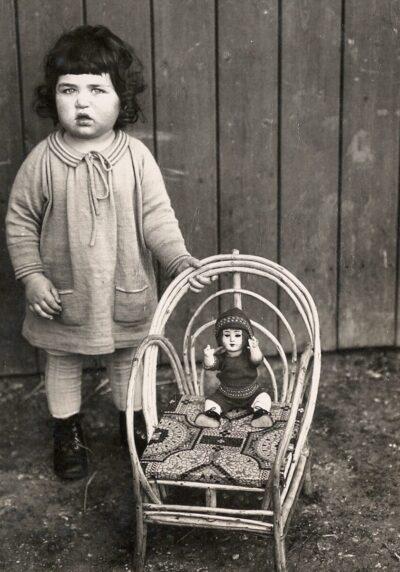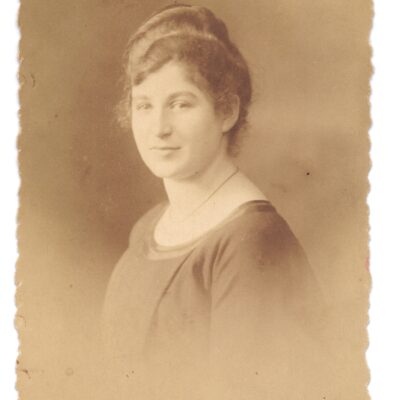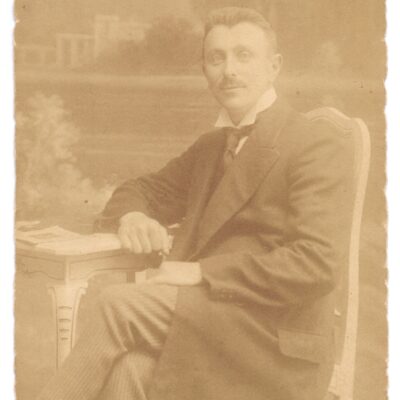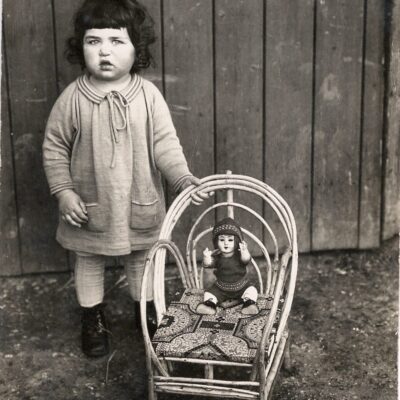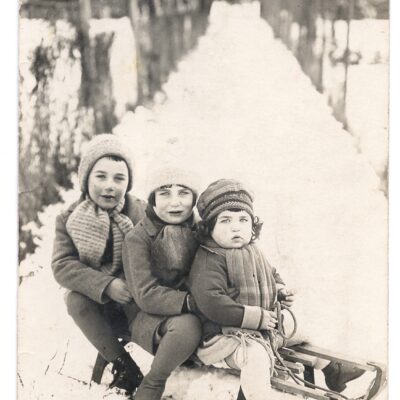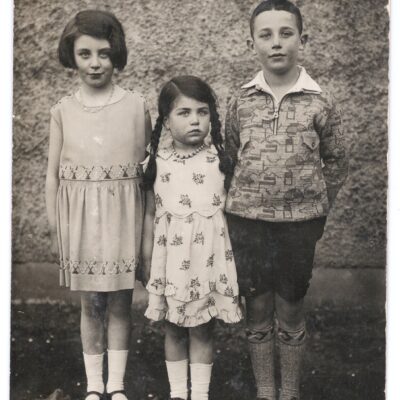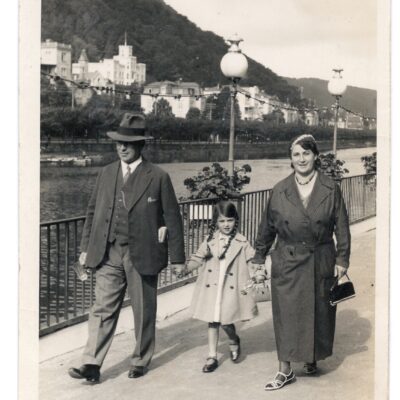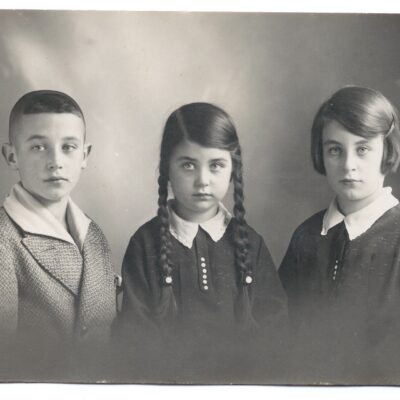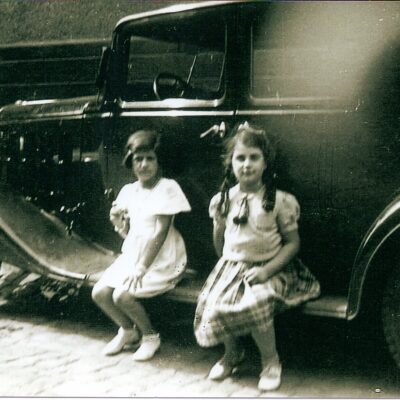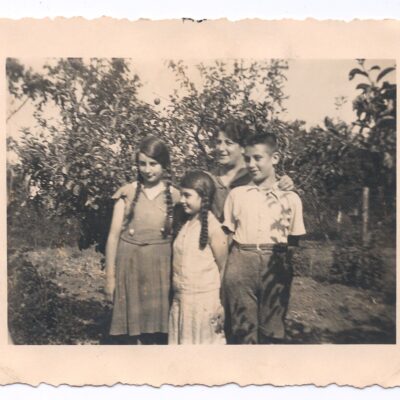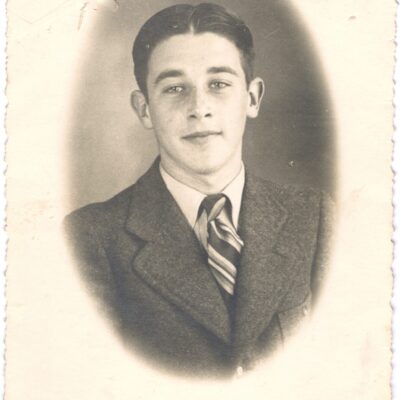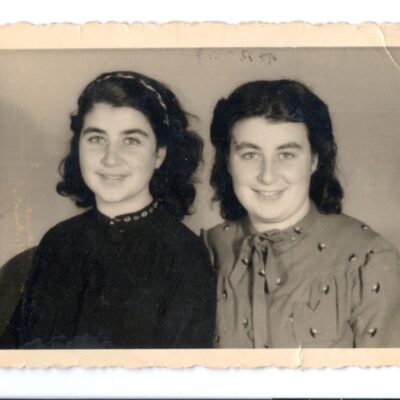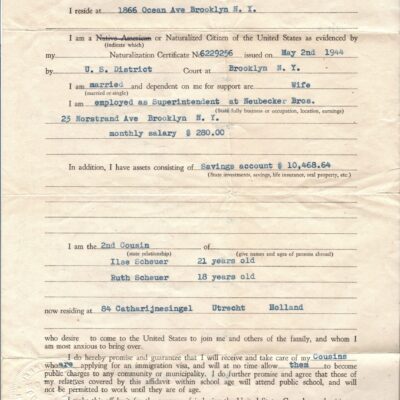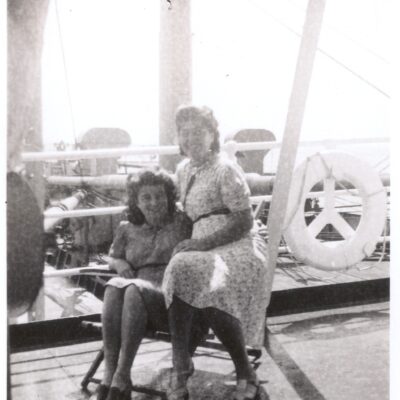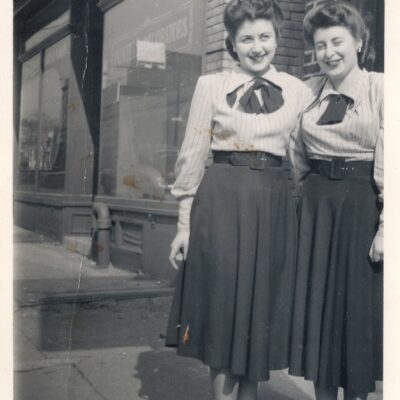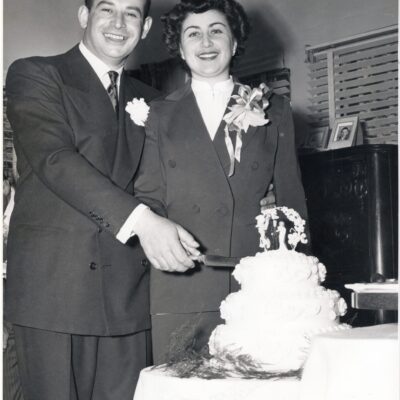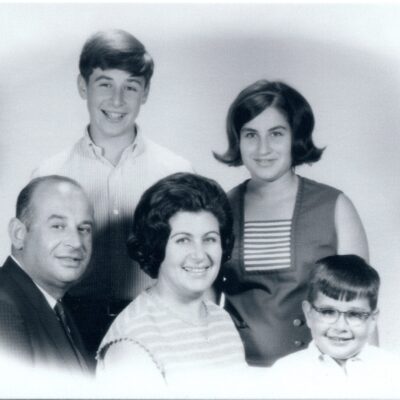Ruth Scheuer Siegler
Biography
Ilse was nine and Ruth was six when Hitler came to power in 1933. Over the next twelve years, the sisters would lose their family and their youth.
Born in Germany, the Scheuer sisters spent their formative years in relative peace and comfort until November 1938, when the events of Kristallnacht resulted in their father escaping to Bilthoven, Holland, to avoid arrest. He joined their brother, Ernst, who was already in school and living there.
In late August 1939, Ilse, Ruth, and their mother joined their father in Holland, planning to obtain visas for passage to England and then America. Before they had the chance to leave, the war began, and the borders were closed. They were trapped. Germany invaded Holland in May 1940, and Mr. Scheuer was sent to Westerbork, a refugee/transit camp. Two years later, the family voluntarily reported to Westerbork rather than be deported. They were all given jobs at the camp.
Every Tuesday morning, 1,000 people were sent out by train to the unknown, but with jobs, the family was safe. In January 1944, Ernst was arrested for not removing his cap in the presence of a German officer. He was slated for transport; the family decided to stay together. Mr. Scheuer’s Iron Cross from World War I allowed them to be taken to Theresienstadt in Czechoslovakia.
One month later, the Scheuer’s were transported from Theresienstadt to Auschwitz II (Birkenau), an extermination camp. Selected for work, the girls and their mother were forced to undress and turn in all personal belongings. They were given striped clothing, a bowl, and consecutive tattoos. During a later SS selection, the girls were separated from their mother, never seeing her again. It was in Birkenau that they last saw their father, after he managed to slip them the address of a cousin in America and to poignantly bless them. Ernst was also sent to work, but later died at a camp in Germany, days before liberation.
The girls worked carrying bricks from one end of the compound to the other for hours at a time. Ilse sewed gun covers and uniforms as well. Working close to the crematory ovens, they saw the mountains of shoes. For the first time, they realized that their fellow prisoners were being killed and cremated.
In July 1944, Ilse and Ruth were sent to the concentration camp of Stutthof in Poland, where they were forced to sleep outside. By midsummer, they were transported on to Praust, Poland, to clear runways for German planes. During the freezing winter, the girls were given a blanket which was used resourcefully to sew slacks for warmth.
In February 1945, with Russian troops advancing, 800 girls were taken on a four-week death march toward the Baltic Sea, where presumably they were to be drowned. Only fifty survived that march, the others died en route.
With the Russian Army approaching, the girls were abandoned by their captors. Weak, ill, and with nowhere to go, they were left on the side of the road to die. They walked through some fields to the first farmhouse they found, but to their dismay, SS troops answered the door and took them in. The next morning, abandoned in the house to die, the sisters contemplated suicide. “We didn’t want to suffer any more.” They were kept alive by the hope that family members may have survived. The girls connected with a liberating soldier on the street and were taken to Russian headquarters.
They were transported to a hospital in Putzig, Poland, where Ruth could recover from typhus, typhoid, and an infection resulting from an earlier beating by an SS woman. Both girls began to heal and gain weight. They were transferred to a Russian hospital in Krakow, but ran away, becoming stowaways on a coal train heading for Prague. They found the Dutch Army in Pilsen, Czechoslovakia, and were directed to Bamberg, Germany, to get proper documentation to return to their home in Holland. The number on their arm served as their train ticket.
Upon returning to Utrecht in Holland, the girls were able to locate their mother’s brother and younger sister, who had both survived by hiding. It was here that the girls re-established their lives. Remembering their father’s wish to have them move to America, the sisters contacted family members in Omaha and Brooklyn. In July 1946, they arrived in Mobile, Alabama, traveling on to Omaha. A few weeks later, they accepted a cousin’s invitation to move to Brooklyn, New York. They settled there, working in a glove factory and learning English at night school and by watching movies.
Both girls met and married German-born Jews in 1949. Ilse married Walter Nathan and they had two children and five grandchildren. Ruth married Walter Siegler and they had three children and seven grandchildren. In 1960, Ruth and Walter moved to Birmingham to be closer to Ilse, who had moved there with her husband in 1949. Both women were subsequently widowed.
Ilse and Ruth were so close in the camps, that to avoid confusion, friends would call them each Ilse-Ruth. Sisters and best friends, they remain close to this day.
Darkness Into Life
This online exhibit of photography and art offers a special glimpse into the private memories of 20 Alabama Holocaust survivors, revealing stories of childhoods past, lost family and friends, despair and sadness, cruelty beyond belief, bravery, the joys of liberation, and new lives in Alabama.
Online ExhibitPhotos & Documents
More Information
Helene Daniel (1898 Flamersheim, Germany-1945 Central Europe) and
Jakob Scheuer (1887 Sinzenich, Germany-1944 Auschwitz)
Ernst Scheuer
(February 23, 1923 Sinzenich – April 16, 1945 in Schwartzheide, a subcamp of Sachsenhausen)
Ilse Scheuer Nathan (Walter Max Nathan)
Born February 20, 1924 Sinzenich
Walter Siegler
(1922 Geroldstein, Germany- 1968 Birmingham, AL)
Married February 20, 1949 in St. Joseph, MO
Steven Jay Siegler (Frances “Cecy” Brady)
Born September 20, 1952 in St. Joseph, MO
Annette Elaine Siegler (Joel Levy)
Born August 14, 1954 in St. Joseph, MO
Daniel (Danny) Ernst Siegler (Cindy Cohen)
Born December 5, 1960 in Birmingham, AL
Westerbork (The Netherlands)
(September 5, 1942 – January 1944)
Theresienstadt (Czechoslovakia)
(January 18, 1944 – May 16, 1944)
Auschwitz II (Poland)
(May 17, 1944 – July 1944)
Stutthof (Poland)
(July 1944)
Praust (Poland)
(Mid-Summer 1944)
February 1945, from Praust, as Russians were approaching
Somewhere in Poland
Maastricht (The Netherlands)
(July 1945)
Moved to Bilthoven, The Netherlands in August 1939.
Voluntarily entered Westerbork, where her father was working.
Remained with her sister, Ilse, throughout the Holocaust.
Wrote her memoir in 2011, “My Father’s Blessing.”

